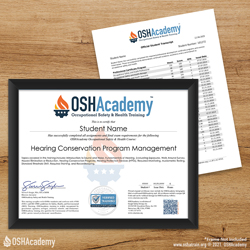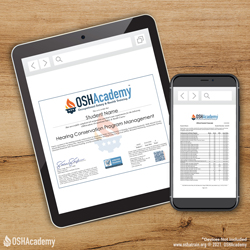Introduction
OSHA's Hearing Conservation Program (HCS) requirements are addressed in the following regulations:
- General Industry: CFR 29 1910.95, Occupational Noise Exposure
- Construction: CFR 1926.52, Occupational noise exposure and CFR 1926.101, Hearing protection
The HCS is designed to help protect workers with significant occupational noise exposures from hearing impairment even if they are subject to noise exposures over their entire working lifetimes.
The course summarizes the required components of OSHA's hearing conservation program, and covers basic topics including: evaluating exposure, controlling hazards, monitoring, audiometric testing, hearing protectors, training, and recordkeeping requirements.
Course Objectives
| ID | Objective |
|---|---|
| TO 1.0 | Achieve a minimum score of 70% on the final course assessment. |
| LO 1.1.1 | Contrast "noise," and "sound," and describe how the ear works. |
| LO 1.2.1 | Describe noise hazards, methods of measurement, and monitoring. |
| LO 1.3.1 | Describe how to eliminate or reduce noise hazards and exposure using the "Hierarchy of Controls." |
| LO 1.4.1 | Describe the components and benefits of a Hearing Conservation Program (HCP). |
| LO 1.5.1 | Describe Hearing Conservation Program (HCP) improvement and related benefits. |
| LO 1.6.1 | Define HCP audiometric testing, noise monitoring, and audit requirements. |
Key: Terminal Objective (TO), Learning Objective (LO)



